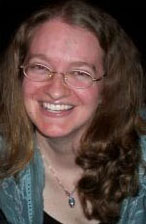
MUSEUM STUDIES
Finding My Place by Hayley Chambers

One of the requirements for an M.A. in Public History is HIS 709: Introductory Research Seminar. The class is designed to teach us how to use and analyze methods for conducting historical research. Along the way, we are learning tips for finding primary and secondary sources, how to digest evidence, and how to combine all the skills that we have acquired into a compelling twenty-page proposal, due at the end of the semester. It feels like I am learning how to do research for the first time. That is hard for me to admit because I know I would not have made it this far without knowing something about research. As an undergraduate, I lived and breathed Classical Studies. Our research dealt with translating ancient Greek and Roman texts and utilizing archaeological reports. I had no idea that researchers used things such as newspapers and church records as sources.
On the first night of class, Dr. Tolbert made us spit out a topic that we wanted to explore. One person wanted to investigate women in the military, another wanted to look at the effects that a small Appalachian school had on its community, and another was curious about a famous public figure in Greensboro. I was nervous and blurted out that I wanted to investigate the fall of the Roman Empire. Although our topics vary, we all are encountering similar issues. Every week our projects are being refined; either the focus shifts or we completely change our topic. I scrapped my original idea because it was too broad and a made big shift in my focus—to the island of Sapelo off the coast of Darien, Georgia. This island is unique for its rich cultural heritage that dates back to the days of slavery. Compared with other islands that dot the coast, Sapelo has tried to resist modern development and still maintains some of the traditions, spiritual beliefs, and folkways of its earliest African inhabitants. Our first assignment was to write a preliminary topic overview, which included a title, project description, timeframe, significance of our project, and our research goals. This was the first time that I had formally thought about a research project.
My original focus was to examine how life had changed in the Hog Hammock community from 1934 to the present. In 1934, the island was purchased by the tobacco tycoon R.J. Reynolds. He consolidated all of the small communities on the island into one, Hog Hammock, which survives today. The more I investigated, the more frustrated I became.
It is not that my idea was bad; rather it had become clear to me that I was following a path already laid out by such eminent historians as William McFeely. Gradually, I have come to find my own place as a researcher in the history of Sapelo. I decided to limit the scope of inquiry to religion. My new timeframe starts in 1866 with the founding of the First Baptist Church. This date marks a shift away from the spiritual beliefs of Africa (Islam) to Christianity. I am curious about the role that education played in this development, and the social and cultural impacts that it had on the people of island. By the end of the semester, I am sure my topic will have evolved again. I have slowly come to embrace this. Change is a natural process. For the first time I feel inspired doing research, not deflated. I can only hope to keep learning and developing.